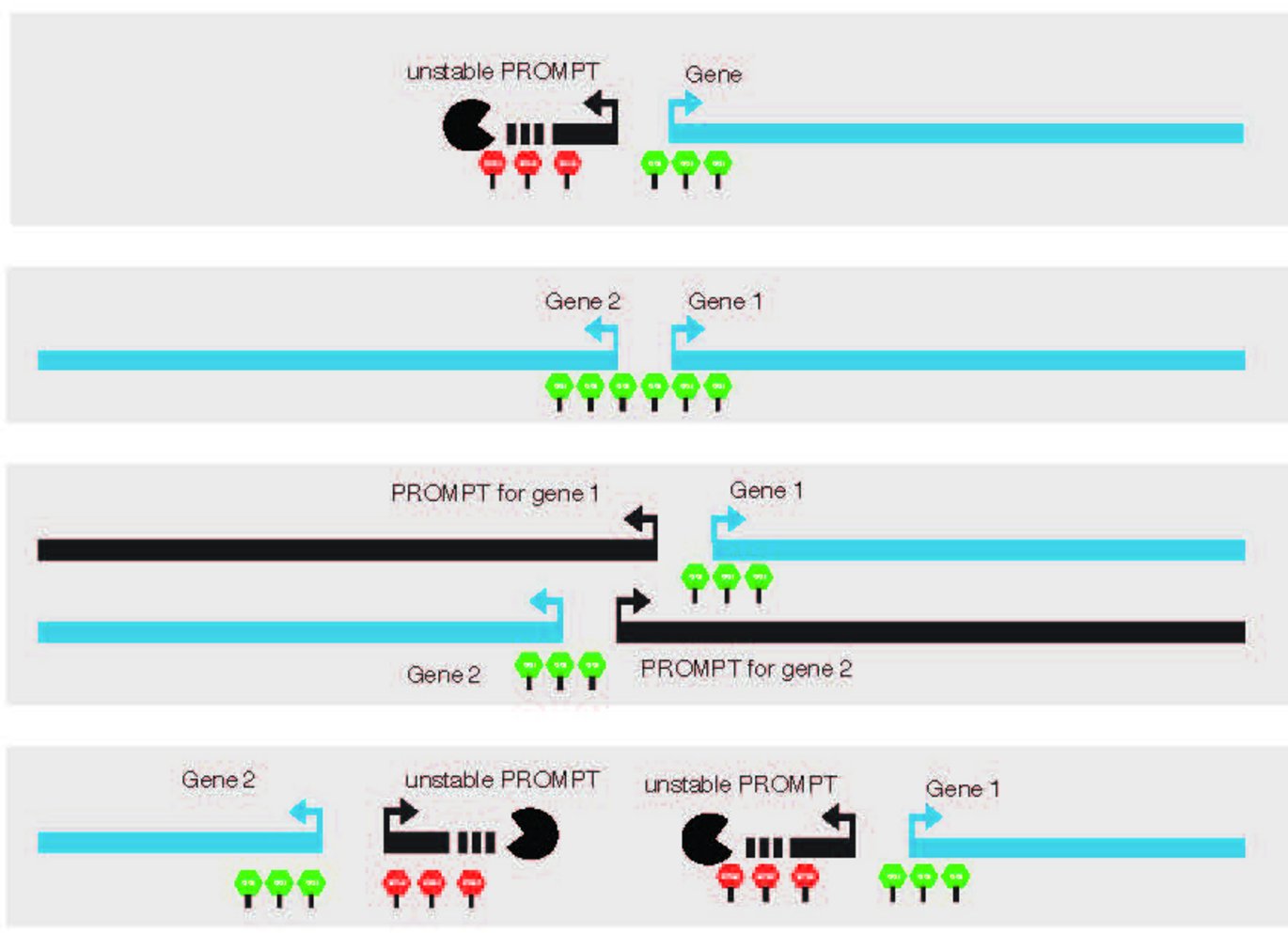Generation of complex gene architectures in the human genome
Intense investigations during the past 10-15 years have revealed that the human genome is transcribed in a manner that is much more complicated than previously appreciated. A collaboration between researchers from Aarhus and Copenhagen now reveals some underlying principles leading to such promiscuous genome activity.

The laboratories of Torben Heick Jensen at Aarhus University and Albin Sandelin at the University of Copenhagen previously established that the large majority of human genes give rise to transcription on both strands from their transcription start sites, typically producing an mRNA on the forward strand and a rapidly degraded transcript, called a promoter upstream transcript (PROMPT), on the reverse strand (see Figure). The degradation of PROMPTs is linked to DNA sequence patterns not found in the mRNA gene region and ensures that the overall output from promoters is primarily that of mRNA.
However, the human genome is complex: genes are often co-localized with their promoters very close to each other. In the present study, published in Nature Genetics, the research groups of Heick Jensen and Sandelin collaborated with scientists at the MIT, Stanford University and the EMBL to delineate the biogenesis of PROMPTs in such complex regions and found that if gene start sites are close, PROMPTs are generated, but will not be degraded because the limited space between gene promoters does not allow for the presence of DNA sequence patterns necessary for PROMPT decay. Instead, PROMPTs grow longer and in effect establish longer products from the two neighboring gene promoters.
More generally, in investigating this process, the teams could define general rules for gene transcription, PROMPT generation and the creation of new gene start sites, from which evolution can shape the transcriptional activity of genomes. These general principles may help explain the vast complexity of the human genome and provide models for how genes and entire genomes evolve over time - models which can now be tested.
Link to the scientific article in Nature Genetics.
For further information, please contact
Professor Torben Heick Jensen
Department of Molecular Biology and Genetics
Centre for mRNP Biogenesis and Metabolism
Aarhus University, Denmark
thj@mb.au.dk - mobile: +45 60202705
